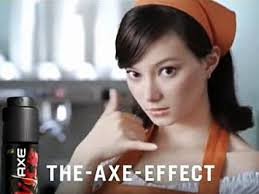Consumer Learning
Learning is the knowledge or skills gained and the changed in peoples behavior based on experience (Solomon, 2011). However learning is not always intentional. An individual can learn without even trying. People recognize brands and hum to product jingle even if that person does not personally use that product or services. This process is called incidental learning. Marketers really tap into this. An example is MacDonald's marketing commercial. Most of their commercial advert have the hum at the end followed by the tagline. Almost everyone recognize the jingle and the I'm lovin it tagline straight after the jingle.

Learning is a continuous process the more people are expose to new stimuli the more it allows people to modify their behavior. The approach to learning ranges from a consumers simple association between a stimulus such as a product logo for example KFC and the response is fast food.
There are several types of learning theories two these includes behavioral which is the reaction to stimuli and cognitive theories which is how the brain process stimuli.
Classical conditioning exists when a stimulus that evoke a response is paired with another stimulus. Ivan Pavlov a physiologist conducted a research on dogs and induced classically conditioned learning by pairing a neutral stimulus (bell) with something that would make a dog salivate (squirting meat powder on a dogs mouth). The powder became unconditioned stimulus because it can already create feedback. Later on, the bell became a conditioned stimulus because the dogs learned that bell would always be presented with food. Therefore whenever the dogs hear the bell it represents feeding time. The dogs were conditioned to respond to the sound of the bell. Marketers really tap into this by making consumers associate feelings to the things they see. They want to make consumers associate their products to their daily lives to the feeling they got when they saw it. They want to get conditioned response consumers or audience.
The World No Tobacco Day advertisement makes viewers associate smoking with death and provokes sensation of fear smoking again because there's the risk that they might die due to the cigars they smoke.
Learning is a continuous process the more people are expose to new stimuli the more it allows people to modify their behavior. The approach to learning ranges from a consumers simple association between a stimulus such as a product logo for example KFC and the response is fast food.
There are several types of learning theories two these includes behavioral which is the reaction to stimuli and cognitive theories which is how the brain process stimuli.
Behavioral Learning Theory
Behavioral learning theory presume that learning that takes place due to the result of responses to external events. The two major approaches to learning represent this view: Classical conditioning and Instrumental conditioning.
Classical conditioning exists when a stimulus that evoke a response is paired with another stimulus. Ivan Pavlov a physiologist conducted a research on dogs and induced classically conditioned learning by pairing a neutral stimulus (bell) with something that would make a dog salivate (squirting meat powder on a dogs mouth). The powder became unconditioned stimulus because it can already create feedback. Later on, the bell became a conditioned stimulus because the dogs learned that bell would always be presented with food. Therefore whenever the dogs hear the bell it represents feeding time. The dogs were conditioned to respond to the sound of the bell. Marketers really tap into this by making consumers associate feelings to the things they see. They want to make consumers associate their products to their daily lives to the feeling they got when they saw it. They want to get conditioned response consumers or audience.
The World No Tobacco Day advertisement makes viewers associate smoking with death and provokes sensation of fear smoking again because there's the risk that they might die due to the cigars they smoke.
Also using a celebrity in advertisement creates unconditioned stimulus which then leads to the positive conditioned response of the audience because this only heightens the value of the product being offered.
Instrumental Conditioning
It occurs when consumer's learn to perform actions that creates positive results and steer away from negative outcomes. Instrumental conditioning produces reward after a certain behavior is performed and it exists three ways: Punishment Positive and Negative Reinforcement. Positive reinforcement in the form of reward which strengthens the response and consumers learn the correct behavior.

This Axe advert persuade users that by choosing to use their brand you would have positive response e.g. the woman instructing you to call her.
Unlike positive reinforcement, negative reinforcement used negative outcomes that serve to encourage the right behavior. Which anti smoking adverts uses this type of marketing strategy. By showing death as negative outcome for people to change their behavior and quit smoking.
Reference
Solomon, M. (2011). Consumer behavior. [S.l.]: Prentice Hall.
Bandura and Observational Learning. (2016).
Boundless. Retrieved from https://www.boundless.com/psychology/textbooks/boundless-psychology-textbook/learning-7/cognitive-approaches-to-learning-48/bandura-and-observational-learning-203-12738/